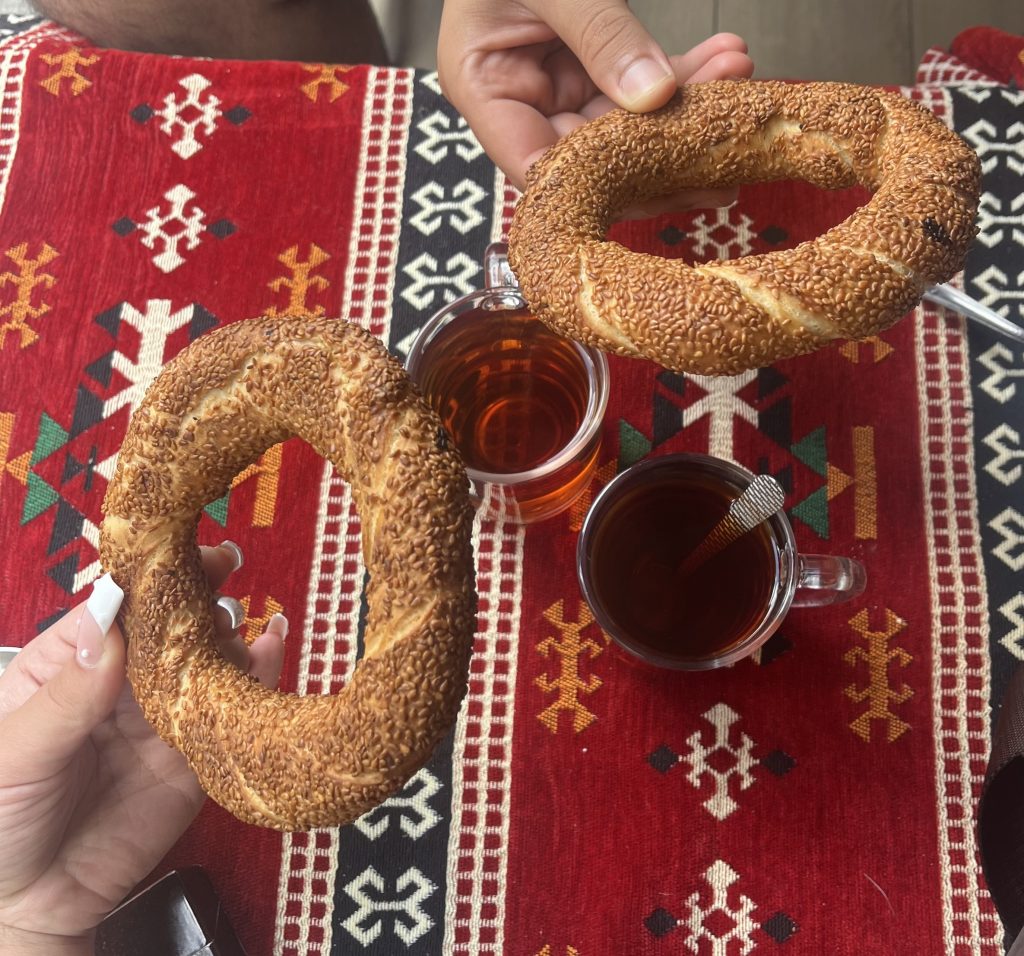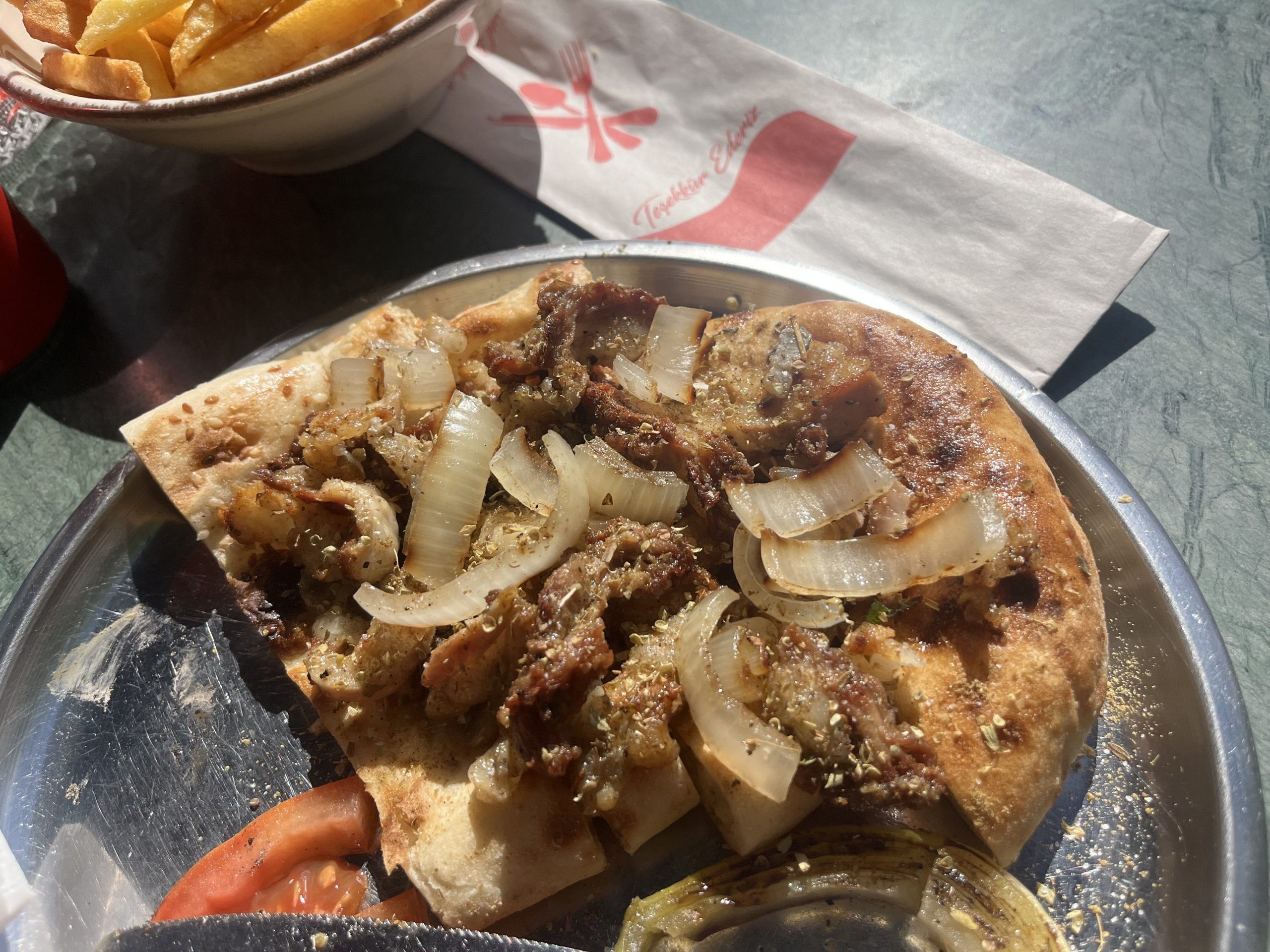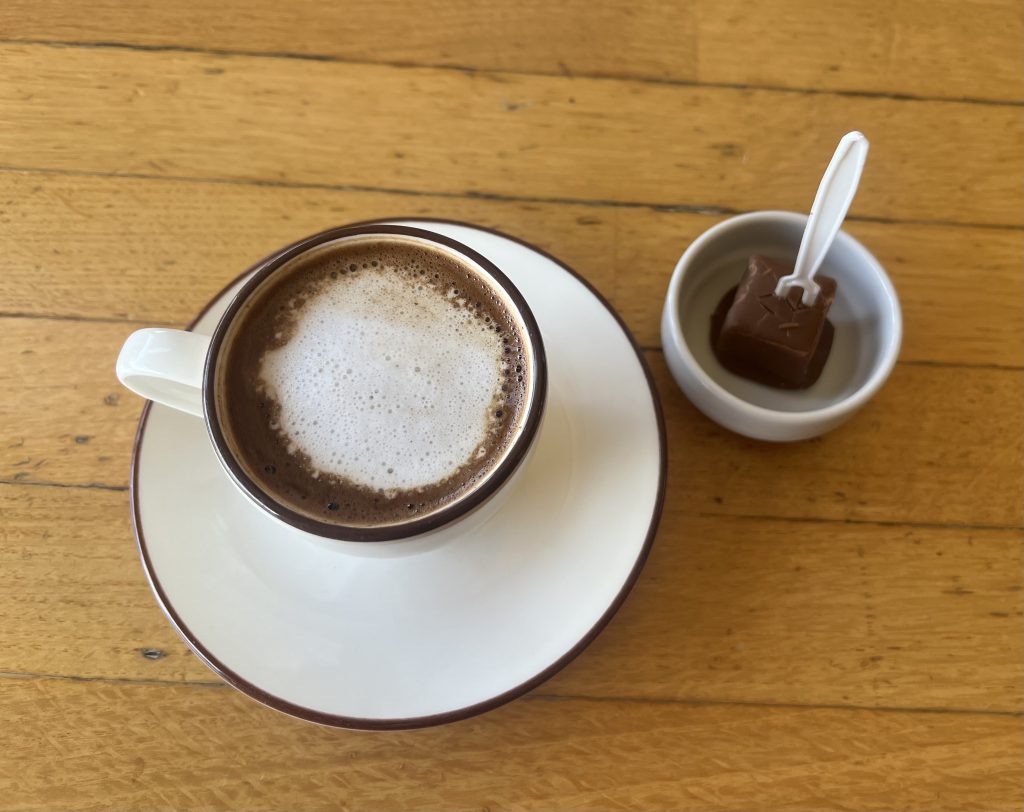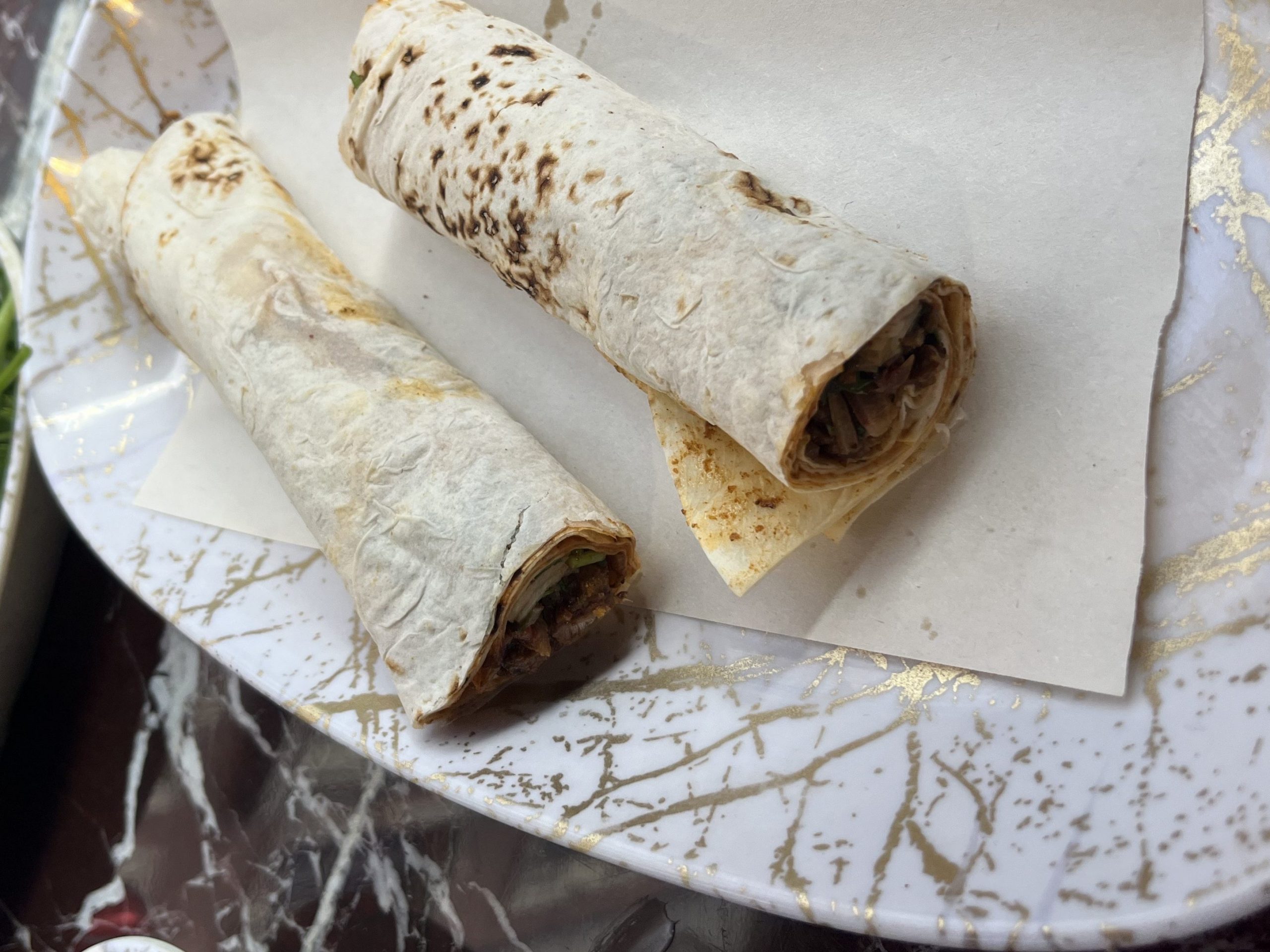Have you heard of the unit of measurement called Scoville Heat Units? It’s a method of measuring the spiciness of chili peppers – for example, jalapeños are around 8,000 SHU at their hottest. With that information, imagine a score of 2,000,000 SHU. This score is among the spiciest known peppers in the world: the Carolina Reaper and the Pepper X. Now, imagine willingly eating twenty hot wings flavored with 2,000,000 SHU sauce within six minutes. Hot wings so spicy that your skin burns when you touch them, so it’s ideal to wear gloves while eating. A friend of mine from Turkey completed this challenge. For “fun”, some free hot wings, and maybe bragging rights..? I always thought of these food challenges as a distinctly American pastime – you know, Man v. Food and whatnot. But apparently, some folks in Istanbul enjoy them as well.
Mehmet is a foodie, through and through. He will intentionally place himself in food challenges around Istanbul – the kind that would leave most people painfully bloated. He has devoured 4.5 pounds (2 kilos) of döner kebab meat on bread. And then ate the remaining food from the plate of his competitor next to him, who was bigger and taller than Mehmet but couldn’t finish his own enormous meal. Mehmet has attempted to consume a pizza with a 2-foot (60 centimeter) long radius, in addition to fried potatoes, onions, and a whole liter of Coke. As Mehmet shared these experiences with me upon our first meeting, I thought, Well, who better to show me around Istanbul’s food scene than this guy?

And that was exactly the idea that became the basis of my initial friendship with Mehmet. While we now know each other well beyond the smells of fish markets and kebab joints, Mehmet offered himself as my personal tour guide and the key to my initial understanding of Turkish gastronomic culture. Cooking and consuming flavorful food, rich with spices and diverse cooking techniques, has been an important aspect of the country since ancient times. For the Ottomans, food was more than nutrition – meals were ceremonial, recipes were ritualistic, and cuisine indicated social status. The kitchen of an Ottoman palace was almost Holy ground, and the focus of the chefs were precise in methodology and presentation.
I was so ready to discover Istanbul’s colorful and delicious world of food as we crossed the calm and crystal blue Bosphorus Strait by ferry. To me, Turkish cuisine has always been fascinating because the most straightforward ingredients are taken and transformed into something unique to this country. Take ayran, for example – plain yogurt mixed with salt and water. This simple and salty yogurt drink is beloved in Turkey. It’s the perfect beverage with breakfast, lunch, and dinner. Personally, I could only drink about half a cup of ayran before I was craving a Coca-Cola. I suspect it’s the kind of drink you have to grow up with to really love.
Lahmacun is another great example of the remarkable simplicity but simultaneous complexity of Turkish dishes. I tried my first bite of this Turkish “pizza” with Mehmet, and basically fell in love at first taste. It’s an ultra-thin flatbread topped with minced meat, minced vegetables, and herbs. The server will also provide you with a second plate full of fresh tomatoes, arugula, onions, and lemon. Place these veggies down the middle of your flatbread, squeeze some lemon juice, a teaspoon of salt, and as many chili flakes as you want to sweat. Roll it up (almost burrito-style, but not quite) and enjoy the spice with the dough, the freshness with the savory. I’m appreciative of Mehmet’s involvement in this experience, because otherwise I would’ve never known how to properly eat lahmacun.

Mehmet also introduced me to the bizarre but spectacular combination of kokoreç and midye. In other words, a grilled lamb intestine sandwich with mussels on the side. Never in my life did I think I’d ever crave a lamb intestine dinner, but one bite of kokoreç and I was hooked. The intestines are chopped into small pieces, and grilled to perfection with different spices and herbs. It’s really possible to taste the smoke of the grill, due to the absorption rate of intestines I’m guessing. I never thought, either, that I’d be eating mussels out of a shell with rice cooked inside the shell with the squishy mollusk. But this is the Turkish way, and oh is it delightful.

Delightful – like a Turkish delight? Absolutely, because Turkish desserts are worth a discussion of their own. Turkish sweets are some of the best I’ve ever had, and I think I will miss them forever. Thank you, Mehmet, for showing me that baklava can be eaten soaked in milk and that, actually, it’s somehow preferable that way. As for künefe? That shredded dough pastry filled with cheese and a sweet syrup? I can barely last a week away from it without having serious bodily withdrawals. And semolina helvasi? I cannot describe how much I love. I think one would just have to travel to this region and try it to even begin to understand. My final recommendation is to wander into a bazaar, find a legit shop that sells lokum (Turkish delight) rolls, and go have yourself a slightly healthier version of a Snickers bar. It’s great.

Turkish tea and coffee culture deserves a blog post of its own, but I’ll trim it to a paragraph. Mehmet introduced me to what became two of my favorite spots in Istanbul: Trend 216 Terrace Cafe, and the authentic Üsküdar tea homes. My first real taste of Turkish coffee was at this terrace cafe – where Mehmet used to work – and I savored every sip like never before. As a non-coffee drinker, this is saying a lot. And the view was beyond wonderful. True Turkish coffee preparation is an elaborate ritual, and often considered a social activity. Contrary to the usual, the grounds will also stay in your coffee mug – many locals know how to read your fortune based on the way the grounds lie after turning your cup over when you’re finished drinking. And if you ever find yourself in Istanbul, please visit a tea home. The planet needs more spaces where you can buy a Çay (delicious hot Turkish tea) for 50 cents, smoke, talk, listen to tunes, and play chess and cards. I adore these places.

One day while Mehmet and I were touring Istanbul, he introduced me to all the different wrap styles they have in their food. The typical dürüm at every corner döner stand – either with chicken or beef made with the typical kebab ingredients: tomato, lettuce, onion, ketchup, mayo, spicy sauce. Next was Çiğköfte at the infamous Çiğköfteci Ali Usta. The owner and cook is quite well-known for being loud and angry (the place has a line down the block just to witness him), but he was quite nice to me! The wrap was delicious – ground bulgur, tomato paste, and a lot of spices. This can be made with raw meat (Çiğköfte literally translates to raw meatballs), but most places stopped doing this due to the obvious health concerns. My last wrap stop with Mehmet was to try tantuni – an extremely spicy beef wrap. I was so stuffed at this point, but Mehmet wasn’t, so he ordered a second tantuni to share. Food coma central.

Eating my way through Istanbul with Mehmet, as well as some of my other local friends, was truly one of the greatest pleasures of my life. I talk about it often on this blog, but I have the full belief that you can’t connect to a culture without trying its food. And I don’t mean the well-known touristy restaurants, either. I mean go try a fish sandwich or a lentil soup at some random alleyway restaurant where the workers don’t know much English – this is where you’ll find the best stuff.
I’ll leave you with one of my favorite travel memories, ever: it’s midnight during my first week in Istanbul, and I’m sitting outside in a circle on a tiny plastic chair with a group of my Turkish friends trying köfte and ayran for the first time. This is the nighttime “Köfte spot”. It’s a small street vendor in Mecidiyeköy, and the smell of the smoke alone is making me drool. I’m learning the Turkish words for water, tea, and bread. This is the most delicious meatball I’ve ever had. This is the beginning of so many discoveries. And I’m just laughing, enjoying this meal with people I had met this week, yet who already feel like forever friends.
I miss them. Thank you again, Mehmet, for showing me to love this food, and teaching me the fascinating history of where it came from. Inshallah, I will see you again. And soon. <3

Subscribe for post notifications!
Follow my Instagram @emmathibodeauu and my TikTok @stepsineverycorner for travel updates and dives into other topics.

Leave a Reply